Pączki – Polish Donuts (+ Video)
As an Amazon Associate and member of other affiliate programs, I earn from qualifying purchases.
These traditional Paczki are the ultimate Fat Tuesday treat! With their tender, butter-enriched dough and sweet fillings, these golden-brown delights are a Polish tradition that’s perfect for celebrating Mardi Gras season. One bite of these pillowy, jam-filled pączki and you’ll understand why they’re worth the effort!
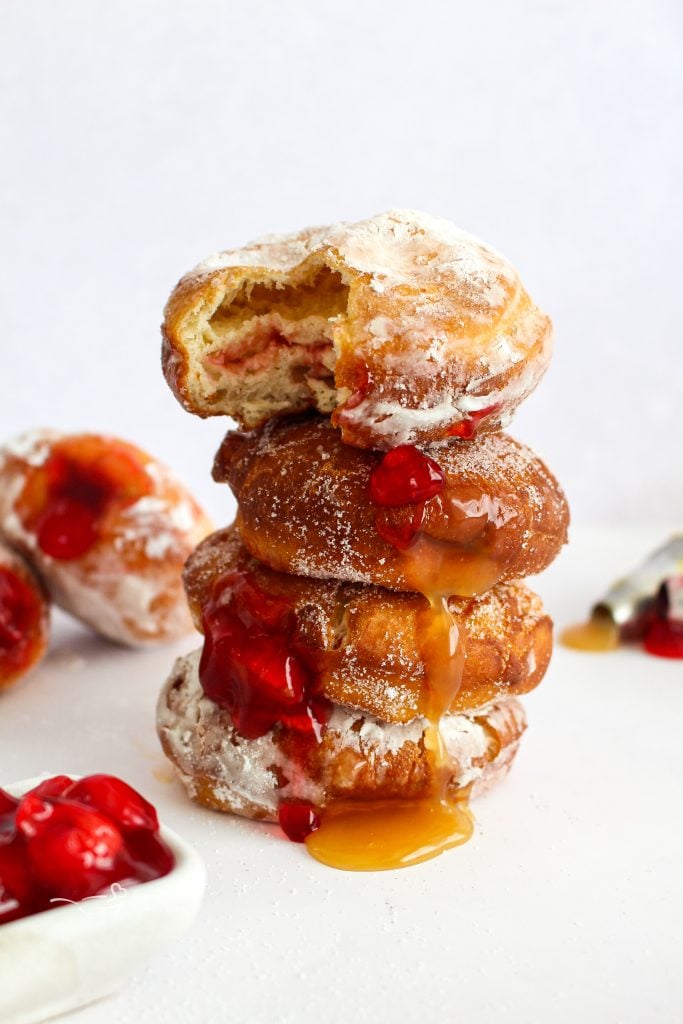
What kind of Polish girl would I be if I didn’t share this scrumptious tradition of Pączki with you? When I originally posted this recipe back in 2020, I had just been gifted an old Polish cookbook, and when I went through and marked pages of things I wanted to try, I knew these donuts would be the first!
So instead of searching “Paczki near me” I just made them myself! What an incredible treat they are and we have adored this recipe ever since then.
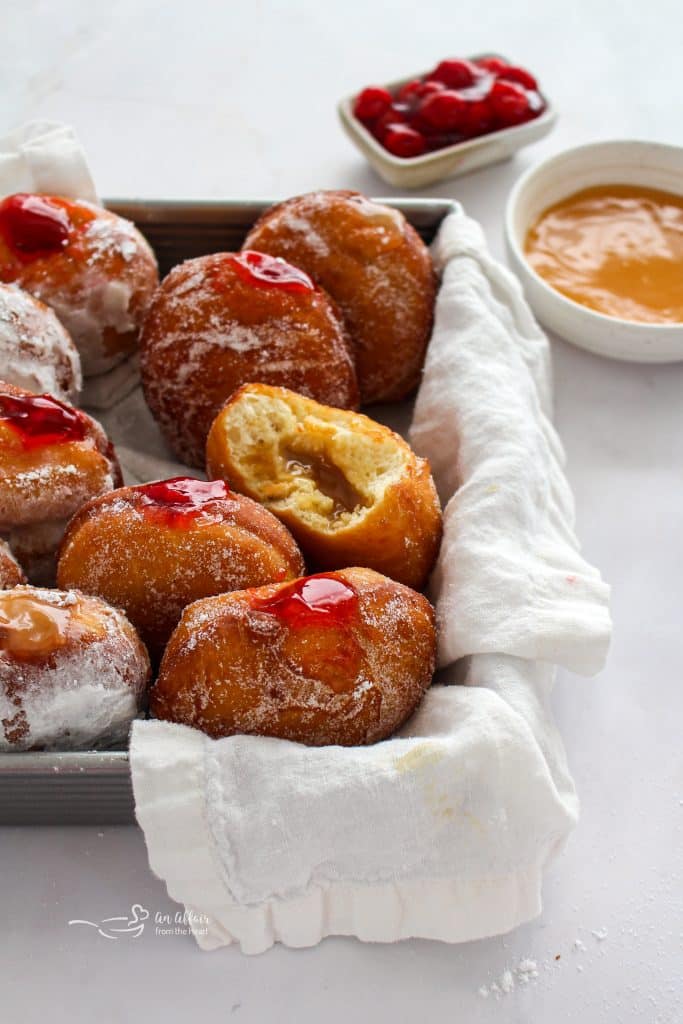
What Are Paczki
Paczki are traditional Polish doughnuts that have been part of Polish culture since the Middle Ages. Unlike regular donuts, pączki are made with a rich, yeast dough containing eggs, butter, and sometimes a splash of spirits, resulting in a luxuriously tender texture. These deep-fried treats are then filled with delicious fillings like stewed plum jam, raspberry preserves, or custard, and finished with either powdered sugar or a sweet glaze.
If you love these Polish donuts, you are sure to love these too: Baked Glazed Lemon Donuts, Double Chocolate Baked Donuts, Chocolate Kraut Doughnuts, and my easy Air Fryer Biscuit Donuts.
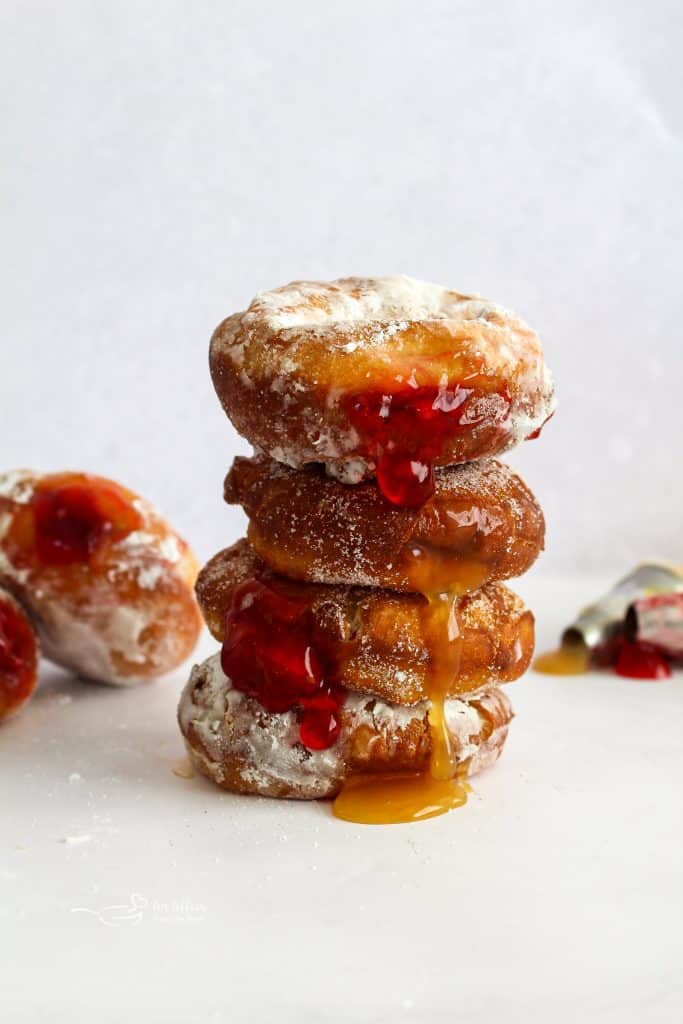
How do you pronounce Paczki?
One of the most common questions about these Polish doughnuts is how to say their name correctly. Pączki is pronounced “POONCH-key” (singular: pączek, pronounced “POON-check”). You’ll hear this word frequently around Fat Tuesday and Mardi Gras, particularly in areas with strong Polish communities where Paczki Day celebrations are common.
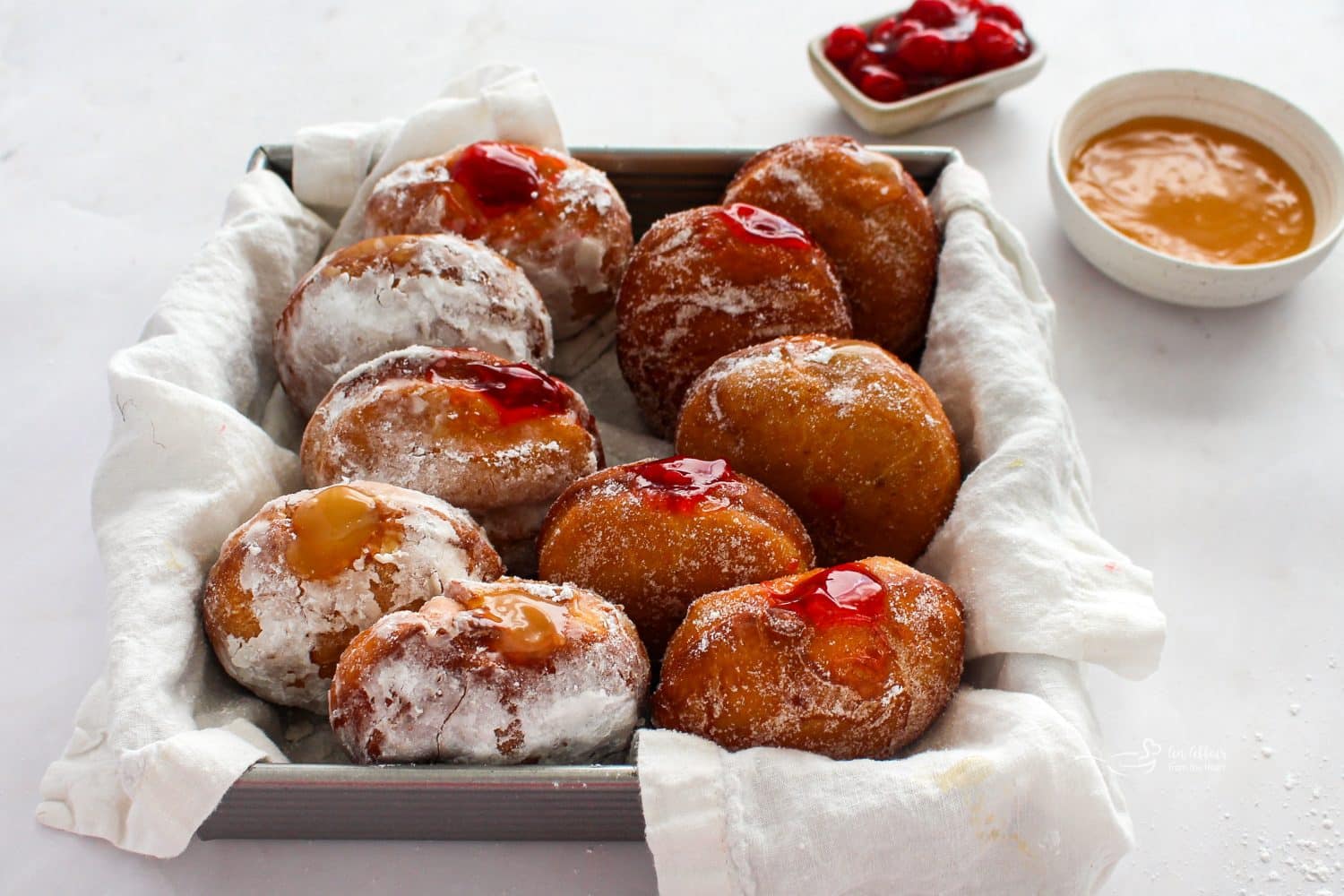
What’s the Difference Between Paczki and Donuts
While pączki might look similar to jelly doughnuts, there are significant differences that make them special. Traditional paczki are made with a richer dough containing more egg yolks than regular donuts, giving them a denser, brioche-like texture. They’re also traditionally fried in lard rather than vegetable oil (though our recipe uses vegetable oil for convenience).
Unlike American jelly donuts (sometimes called Bismarcks), authentic pączki have less air and a heartier bite. The filling is also more generous – a good pączek should be bursting with filling! This richness is by design – paczki was created to use up all the eggs, sugar, and lard in the house before the fasting period of Lent began.
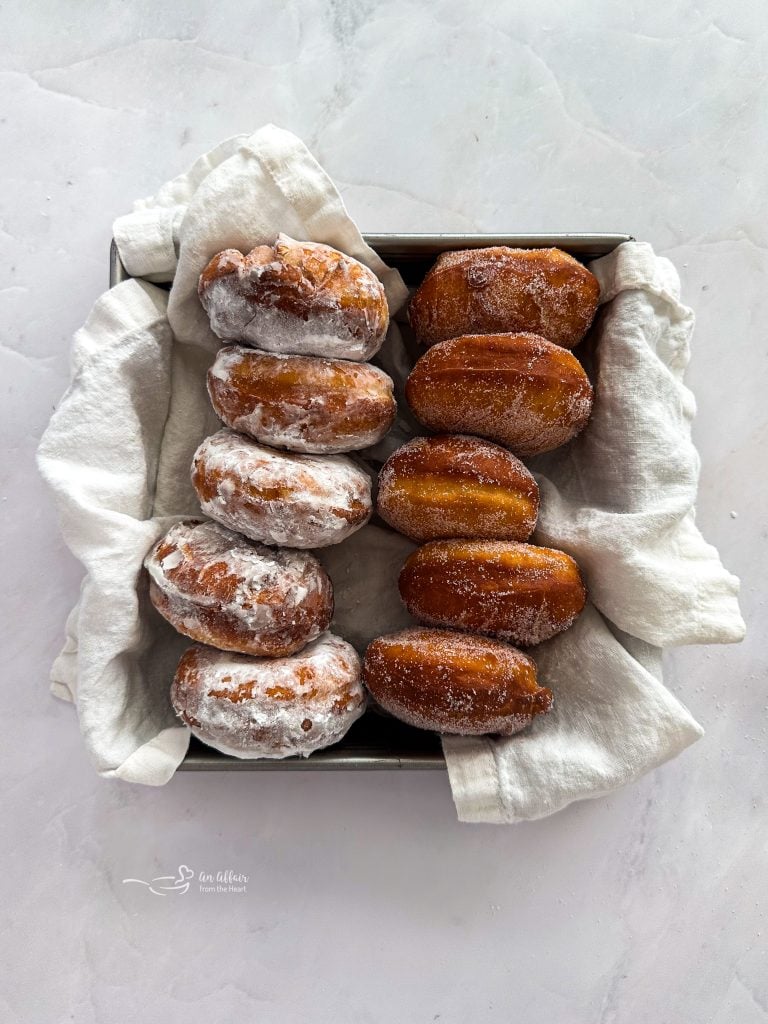
When is Paczki eaten?
In Poland, pączki are traditionally eaten on Tłusty Czwartek (Fat Thursday), the last Thursday before Ash Wednesday. It marks the beginning of the final week of pre-Lenten celebrations. In the United States, however, these Polish donuts are more commonly associated with Fat Tuesday (also called Shrove Tuesday or Pączki Day), the day before Ash Wednesday.
This timing isn’t accidental – paczki were created as a practical way to use up rich ingredients like eggs, sugar, and lard before the Lenten fast began. Today, Polish bakeries and grocery stores throughout the United States, especially in areas with large Polish-American populations like Chicago and Detroit, sell thousands of pączki in the days leading up to Lent.
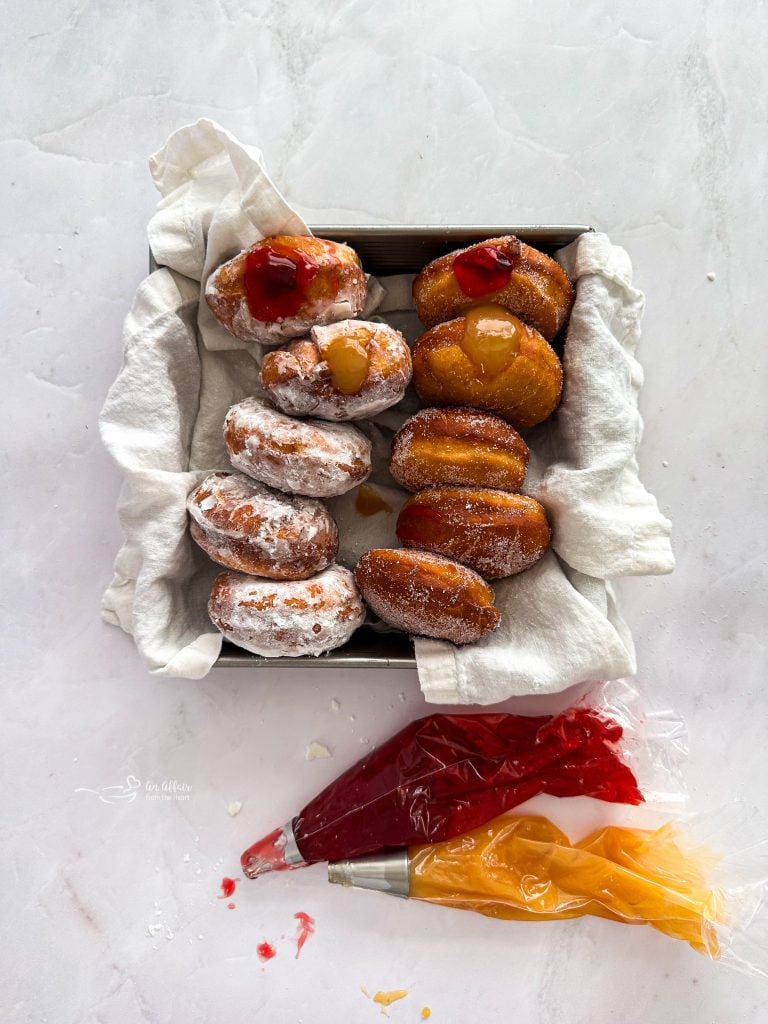
Fillings for Paczki
Traditional pączki fillings include rose hip jam, prune butter (powidła), and stewed plum jam, but modern versions offer endless possibilities. Here are some popular fillings you might want to try:
- Raspberry jam (a modern favorite)
- Custard filling
- Lemon curd
- Bavarian cream
- Strawberry preserves
- Apple butter
- Blueberry preserves
- Sweet cheese (twaróg)
The beauty of making your pączki is that you can customize them with your favorite filling!
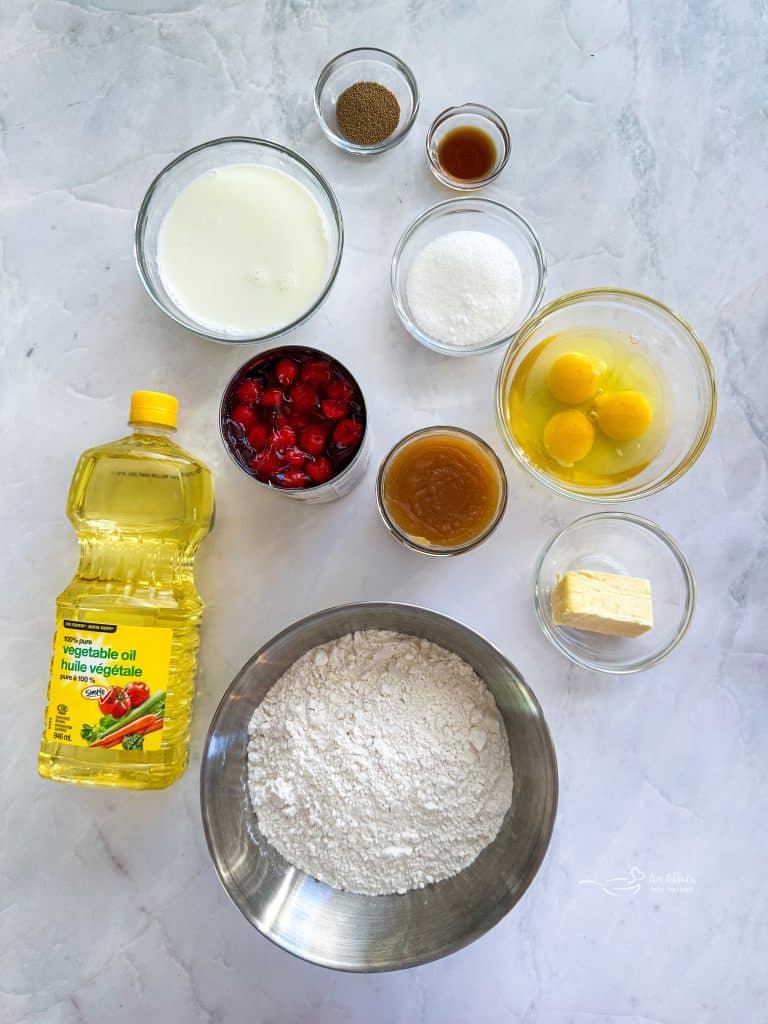
Ingredients in Pączki
For complete ingredients and instructions scroll to the bottom of this post for the full printable recipe.
- Scalded milk – Scalding the milk creates the perfect environment for yeast and gives pączki their distinctive texture
- Butter – Use room temperature unsalted butter for best results
- Sugar – Provides just the right amount of sweetness to the dough
- Vanilla extract – Adds depth of flavor to complement the fillings
- Active dry yeast – The leavening agent that creates the fluffy texture
- Eggs – Use large eggs at room temperature for proper incorporation
- All-purpose flour – The foundation of our dough, you may need to adjust the amount slightly
- Vegetable oil – For deep frying; you can substitute canola oil or peanut oil
- Filling options – Jam, custard, or lemon curd are all traditional choices
- Sugar coating – Either granulated sugar or confectioners’ sugar works beautifully
Be sure to keep reading to find tips and tricks, substitutions, and answers to questions you may have about this Paczki Polish Donut Recipe.
How to make Paczki Polish Doughnuts
This recipe requires some time and patience, but the results are well worth it!
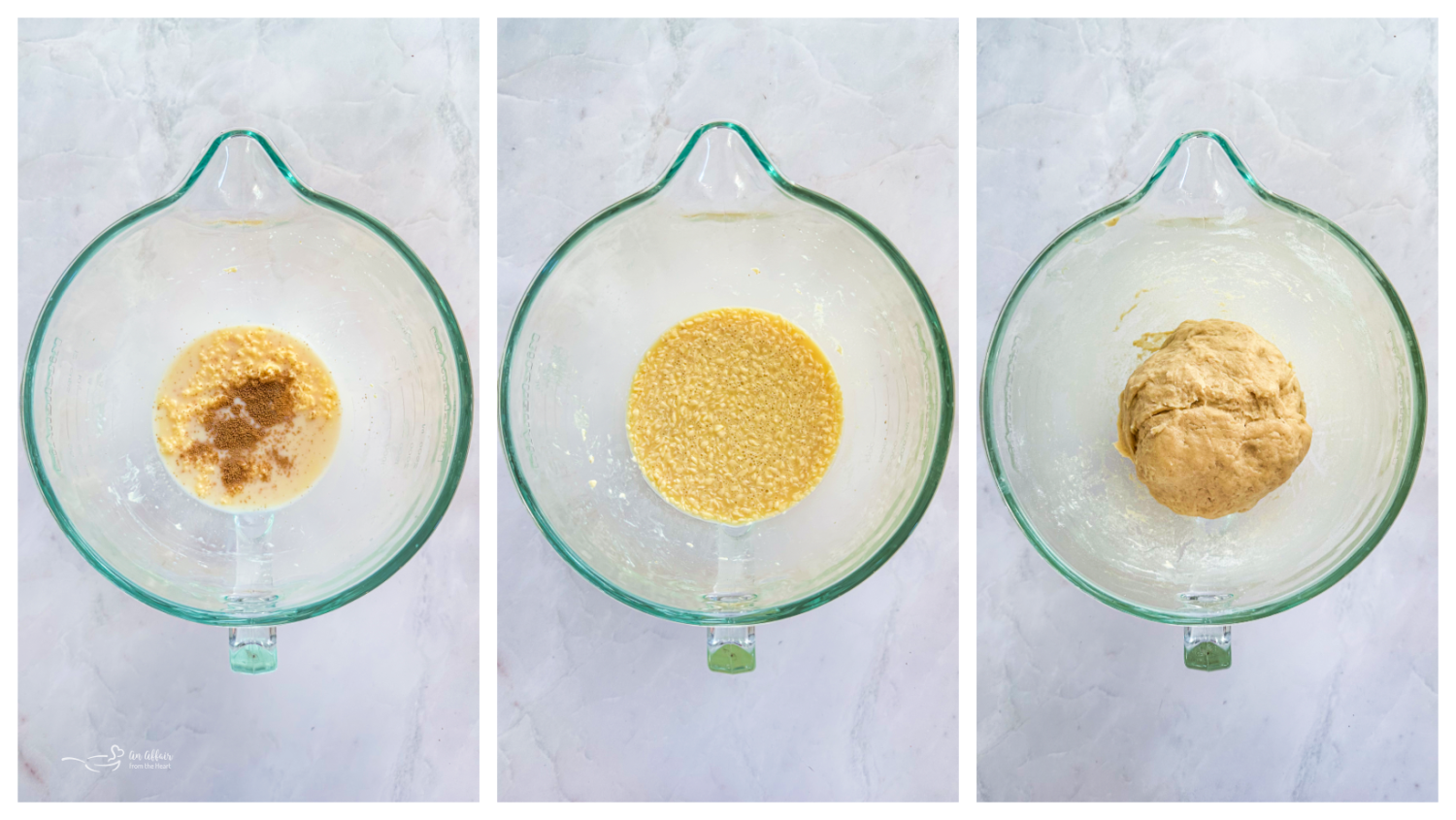
In a saucepan, scald milk, then cool it to 110 degrees F. In the bowl of your stand mixer, add milk, butter, sugar, and vanilla. Using the whisk, mix until sugar is dissolved, and butter is incorporated. Add a package of active dry yeast and mix again until dissolved.
Scrape down the sides of the bowl and add each egg, one at a time, mixing in each one at a time.
Attach the dough hook to your mixer. Turn the mixer to low speed (speed 2) and slowly add the flour to the milk mixture a little at a time. You may not need all of the flour, and you may need a bit more. Mix until dough is smooth.
Remove the dough ball, spray the bowl with non-stick cooking spray, add the dough back in, spray the top of it with non-stick spray. Cover the bowl with a clean towel and let rise in a warm, draft-free place for 1 hour. It will double in size.
*Note: If you have a cold or drafty house, you will want to rise your dough in a warmer spot in your kitchen.
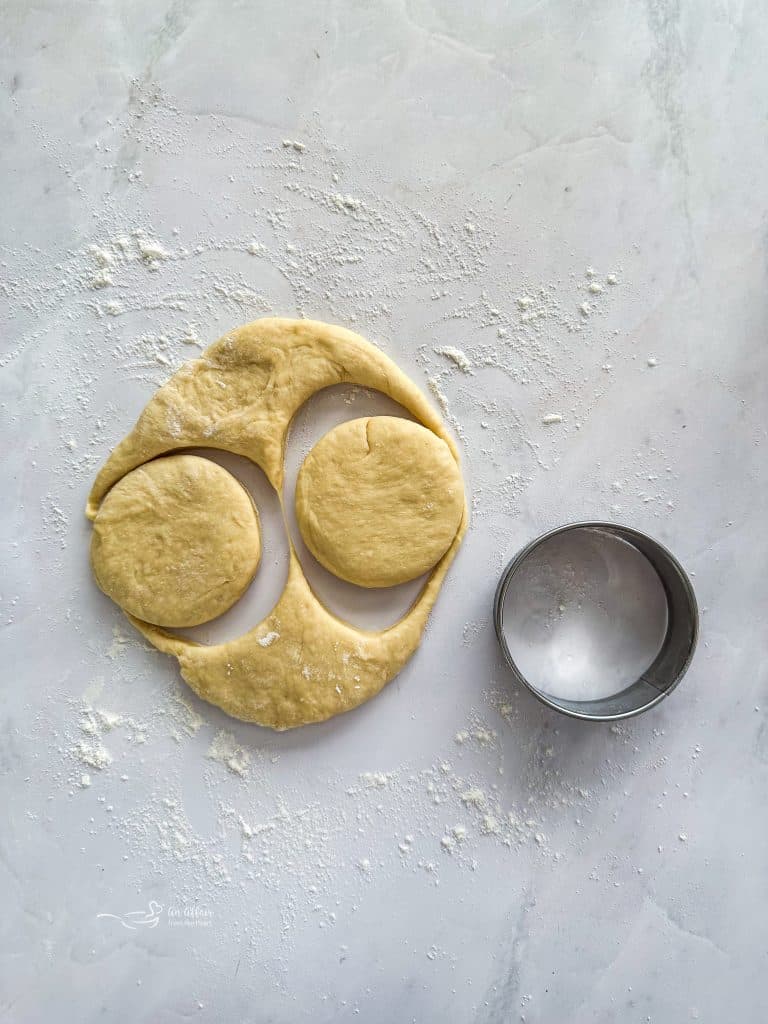
When the dough has risen, grabbing parts of it at a time, place on a lightly floured surface and roll out to about 1/2″-3/4″ thick. Using a biscuit cutter or glass that is about 3″ in diameter cut circles. Continue rolling until the dough is all cut.
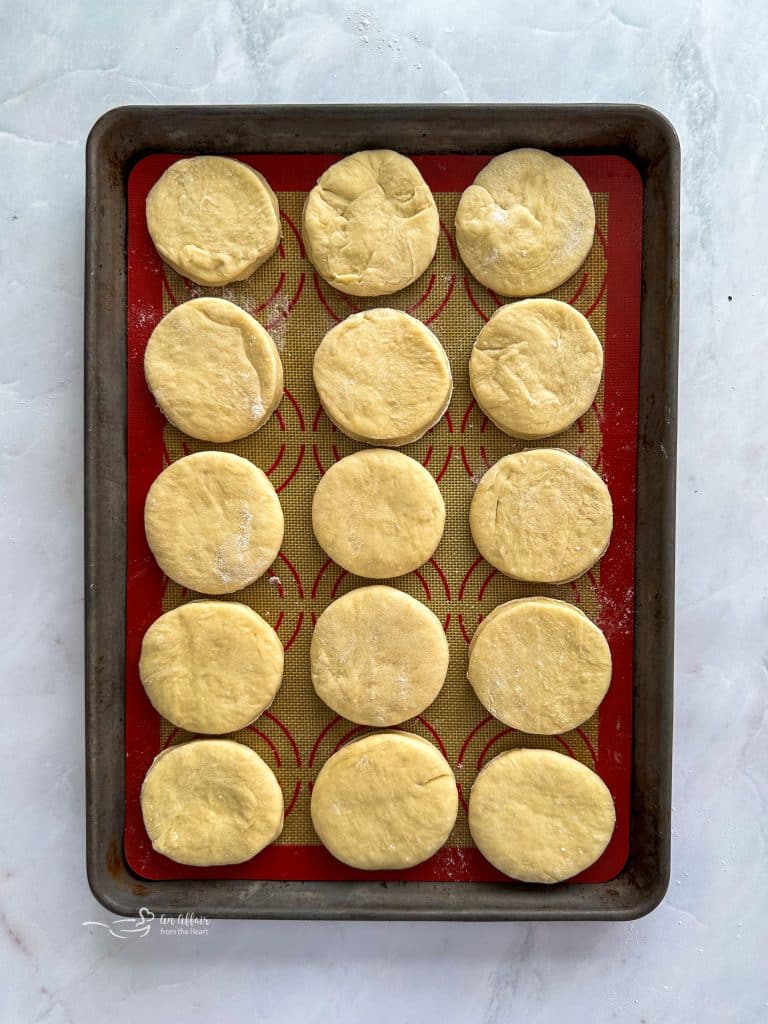
Transfer the rounds to a cookie sheet lined with parchment paper, cover lightly with a clean towel, and let the cut dough rounds rise again for 30 minutes.
Fill a cast iron Dutch oven with about 3″ of oil. Gather your sugar, and place your desired filling in a piping bag. Line a large bowl with paper towels.
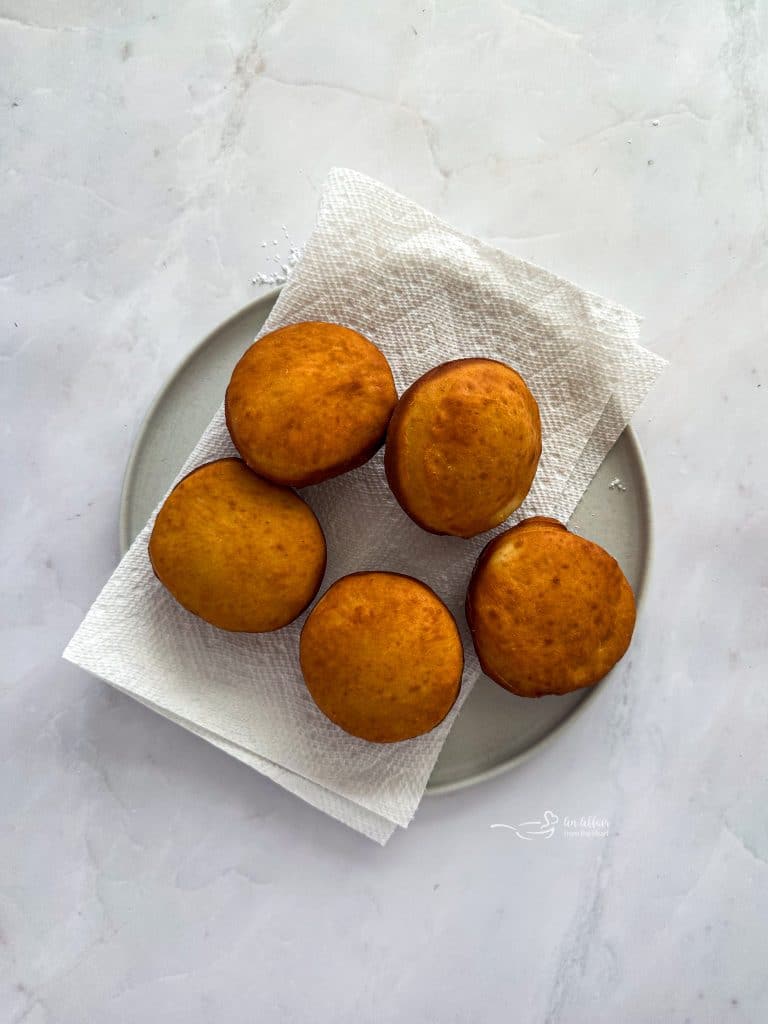
Heat oil to 350 degrees F. Add about 3-4 rounds to the hot oil, top side (dry side) in first. Watch closely and flip when they are golden brown. I used a flat-slotted spoon. Remove them when they are golden on both sides, and place them in the bowl lined with paper towels.

When donuts are still warm, but able to be handled, roll them in sugar. Poke a hole in the side with a sharp knife and fill it with jam using a piping bag.
These Polish donuts are best enjoyed fresh the same day they’re made. When storing, don’t wrap them too tightly, or the sugar coating will become wet. Consume within 3 days. Paczki freeze well wrapped tight in an airtight container, you can freeze them for up to 3 months. Simply thaw them on the counter for 30 minutes to enjoy.
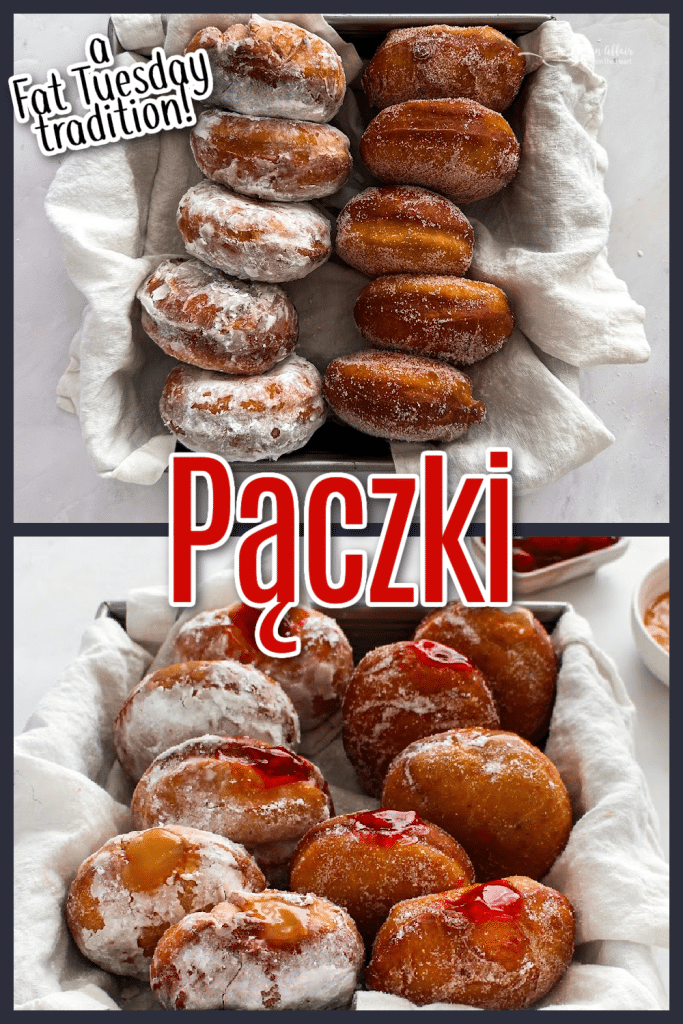
Love it? Pin it!
If you love this Polish Donut Recipe make sure that you don’t lose it! Pin it to your favorite Pinterest recipe board before you go!
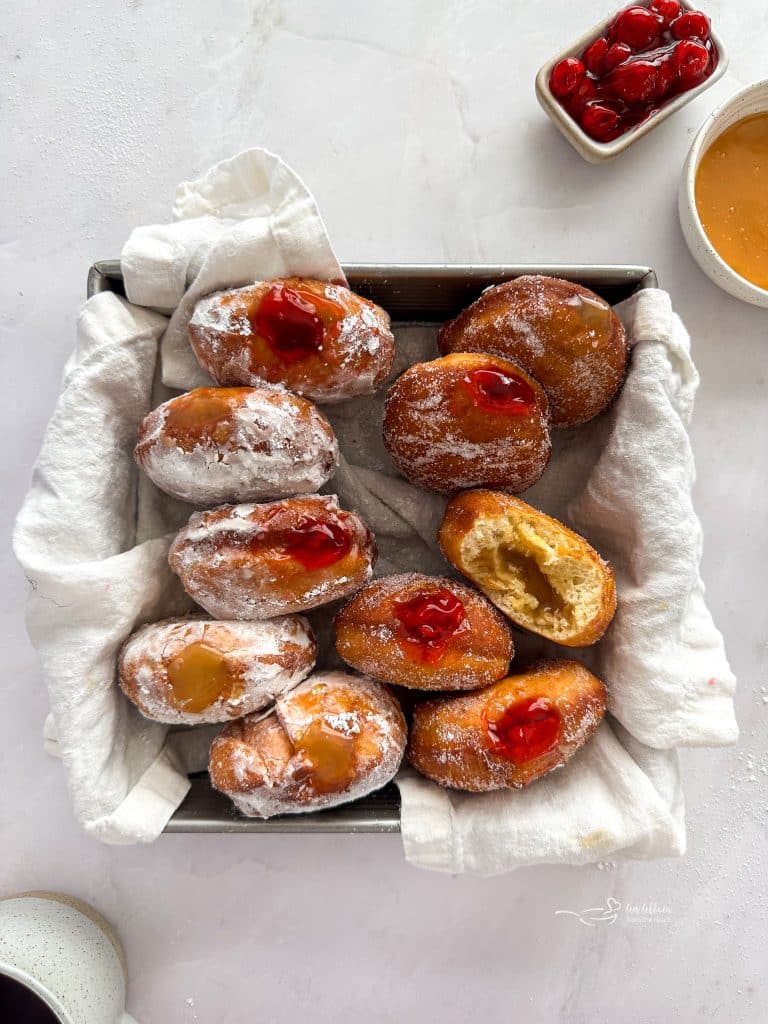
FAQs about Paczki
- What is the difference between a donut and a paczki? Pączki contains more eggs, butter, and sugar than standard donuts, making them richer and denser. They’re also traditionally filled, unlike many American-style donuts.
- What’s the difference between a paczki and a jelly donut? While both are filled with sweet fillings, pączki have a richer dough with more eggs and butter, giving them a denser, more substantial texture compared to light, airy jelly donuts.
- What is the difference between Paczki and Bismarck? Bismarcks (also known as Berliners) are German-style filled donuts. They’re similar to pączki, but typically lighter with less eggs and butter in the dough.
- When is Paczki Day? In Poland, pączki is traditionally eaten on Fat Thursday (Tłusty Czwartek), the last Thursday before Lent. In the United States, they’re more commonly associated with Fat Tuesday, the day before Ash Wednesday.
Tips & Tricks
- To scald milk properly: Heat milk in a small saucepan over medium heat until tiny bubbles form around the edges (about 180°F). Remove from heat immediately to prevent burning. Let cool to 110°F before using.
- For the best rise: Ensure your yeast is fresh and active, and let the dough rise in a warm, draft-free place.
- Oil temperature is crucial: Use a candy thermometer to maintain oil at 350°F for perfect golden-brown pączki.
- Prevent oil absorption: Don’t overcrowd the pan when frying – this lowers the oil temperature and makes greasy donuts.
- For easy filling: Use a wooden skewer to create a hole in the side of the pączek, then use a piping bag with a long tip to fill generously.
- Roll in sugar while warm: The residual heat helps the sugar stick to the surface perfectly.

More Recipes to Love
These Paczki Polish Donuts are a fantastic way to celebrate Fat Tuesday as are my King Cake Donuts (pictured above) I have lots of donut recipes here on my site, so be sure to check out my Powdered Sugar Donuts, these Baked Banana Donuts, Glazed Pumpkin Donuts, Cherry Limeade Baked Donuts and these Baked Chocolate Covered Strawberry Donuts before you go.
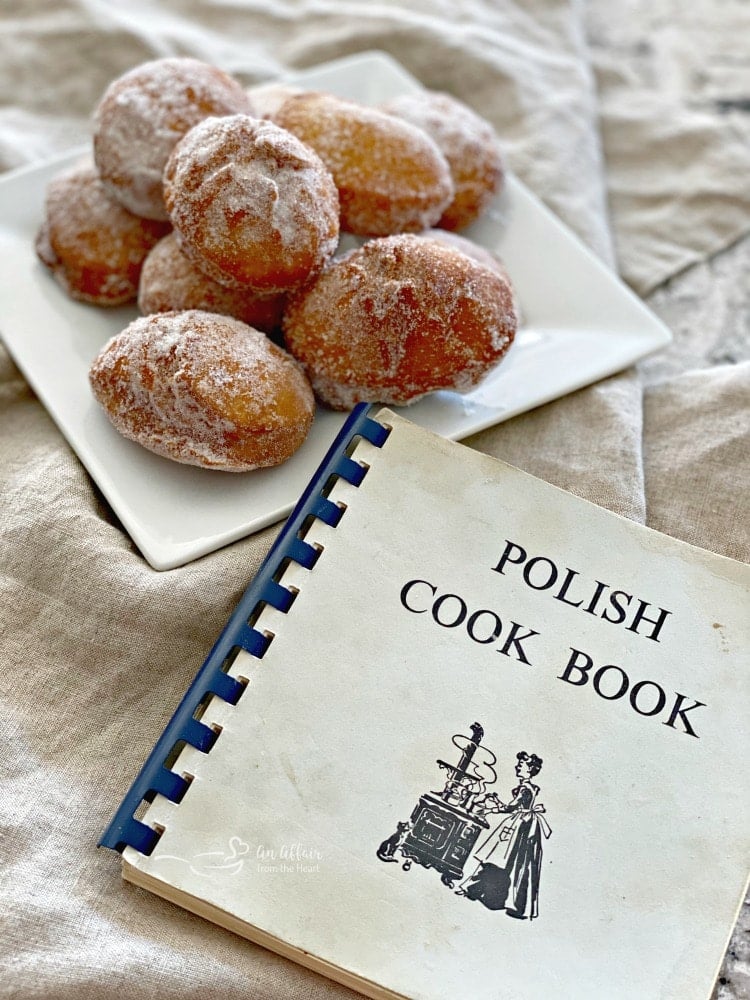
Traditional Polish Recipes
My son-in-law’s aunt gave me this cookbook. It is from the 1970s and it’s a collection of recipes put together by one woman’s daughters. It’s like a goldmine! This cookbook is where I got this Polish Pączki recipe.
If you like this Pączki recipe and want to learn more about the Polish recipes handed down through generations in our family, then here are some to check out:
- Kapusniak (Sauerkraut soup)
- Smoked Polish sausage
- Polish Noodles -Kluski Kapusta Kiszona or Polish Haluski
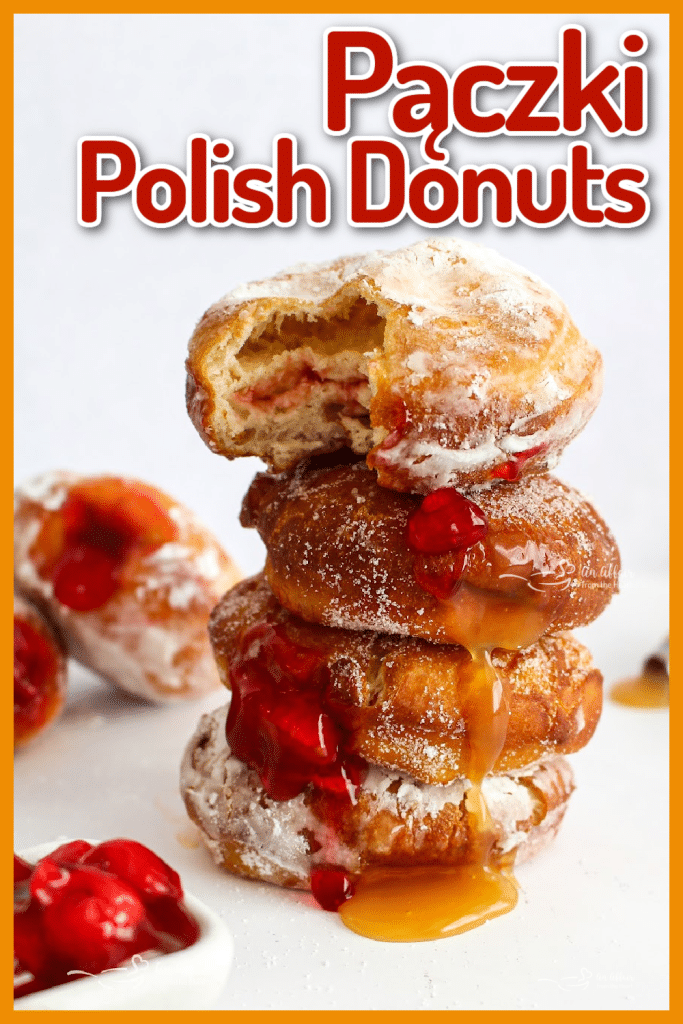
Celebrate Mardi Gras with Homemade Paczki!
There’s nothing quite like biting into a warm, freshly made pączek on Fat Tuesday! These traditional Polish Donuts are the perfect way to celebrate before Lent begins. With their rich dough and sweet fillings, homemade paczki brings a taste of Polish tradition to your Mardi Gras celebrations. Serve them alongside king cakes for a truly festive spread that your family and friends will talk about until next year!

LIKE THIS RECIPE?
Don’t forget to give it a ⭐️⭐️⭐️⭐️⭐️ star rating and
leave a comment below the recipe!
Pączki – Polish Donuts
Equipment
Ingredients
- 1 cup scalded milk cooled to a lukewarm temperature of 110 degrees F.
- 1/4 cup butter room temperature
- 1/4 cup sugar
- 1/2 teaspoon vanilla
- 1 package active dry yeast
- 3 large eggs room temperature
- 4 cups all-purpose flour may need a little more or less
- Vegetable Oil for frying
- Jam custard, lemon curd for filling
- Sugar or confectioners’ sugar for rolling
Instructions
- In a saucepan, scald milk, then cool it to 110 degrees F. In the bowl of your stand mixer, add milk, butter, sugar, and vanilla. Using the whisk, mix until sugar is dissolved, and butter is incorporated. Add a package of active dry yeast and mix again until dissolved.
- Scrape down the sides of the bowl and add each egg, one at a time, mixing in each one at a time.
- Attach the dough hook to your mixer. Turn the mixer to low speed (speed 2) and slowly add the flour to the milk mixture a little at a time. You may not need all of the flour, and you may need a bit more. Mix until dough is smooth.
- Remove the dough ball, spray the bowl with non-stick cooking spray, add the dough back in, spray the top of it with non-stick spray. Cover the bowl with a clean towel and let rise in a warm, draft-free place for 1 hour. It will double in size. (I place mine in a warm oven)
- When the dough has risen, grabbing parts of it at a time, place on a lightly floured surface and roll out to about 1/2"-3/4" thick. Using a biscuit cutter or glass that is about 3" in diameter cut circles. Continue rolling until the dough is all cut. Transfer the rounds to a cookie sheet lined with parchment paper.
- Cover lightly with a clean towel, and let rise for another 30 minutes.
- Fill a cast iron Dutch oven with about 3" of oil. Gather your sugar, and place your desired filling in a piping bag. Line a large bowl with paper towels.
- Heat oil to 350 degrees F. Add about 3-4 rounds to the hot oil, top side (dry side) in first. Watch closely and flip when they are golden brown. I used a flat slotted spoon. Remove them when they are golden on both sides, and place in the bowl lined with paper towels.
- When donuts are still warm, but able to be handled, roll them in sugar. Poke a hole in the side with a sharp knife and fill with jam using a piping bag.
- They are best eaten when warm the first day. Can be stored in an airtight container for up to 3 days.
Notes
Nutrition
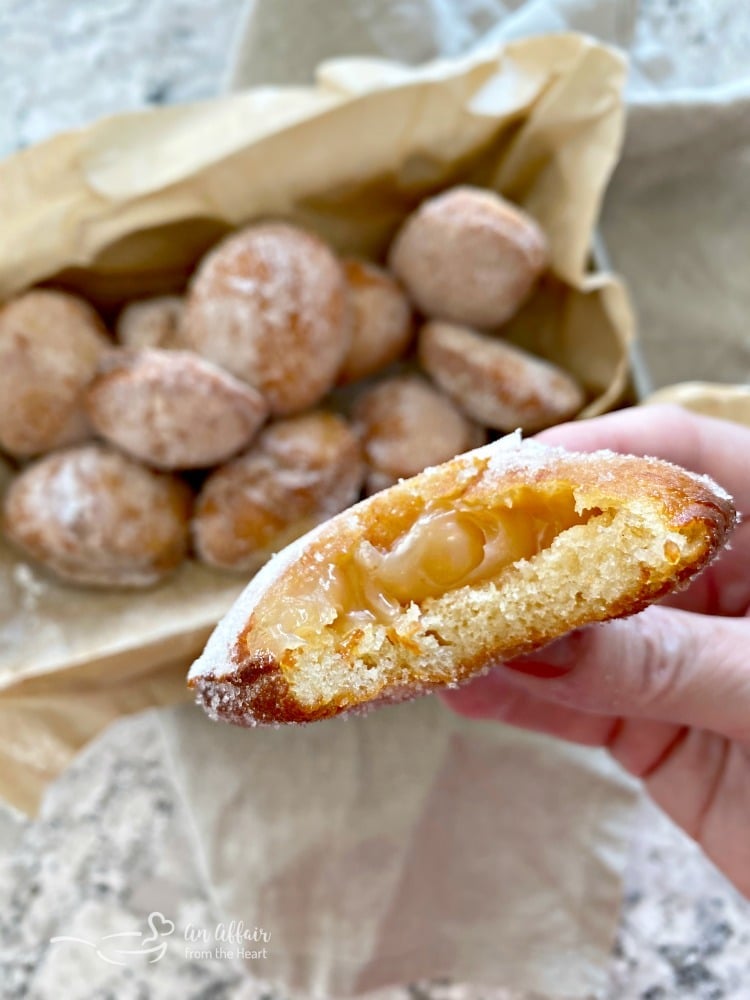
This recipe was originally posted on February 21, 2020. It has been updated to improve user experience and reshared on February 20, 2025.




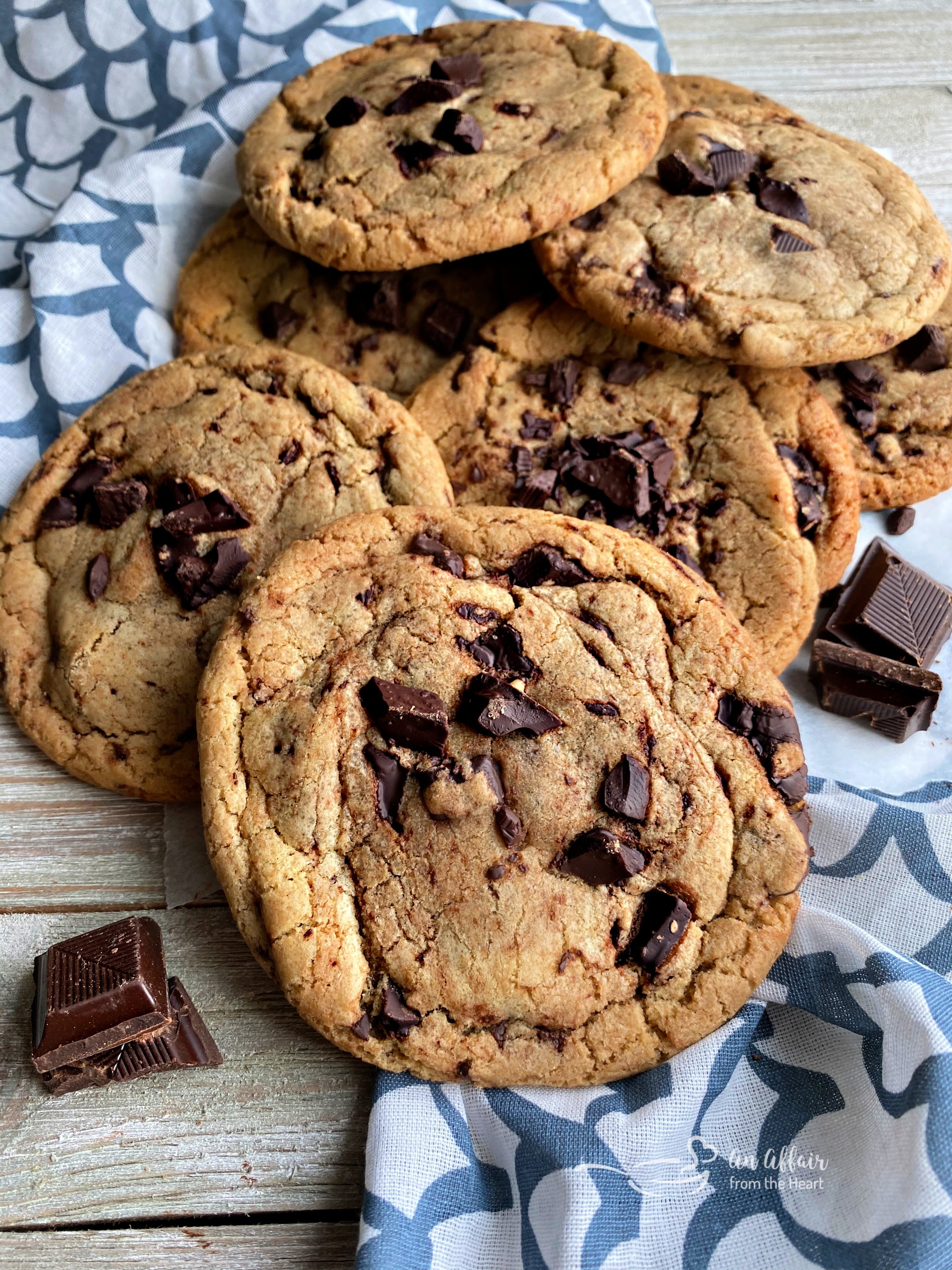
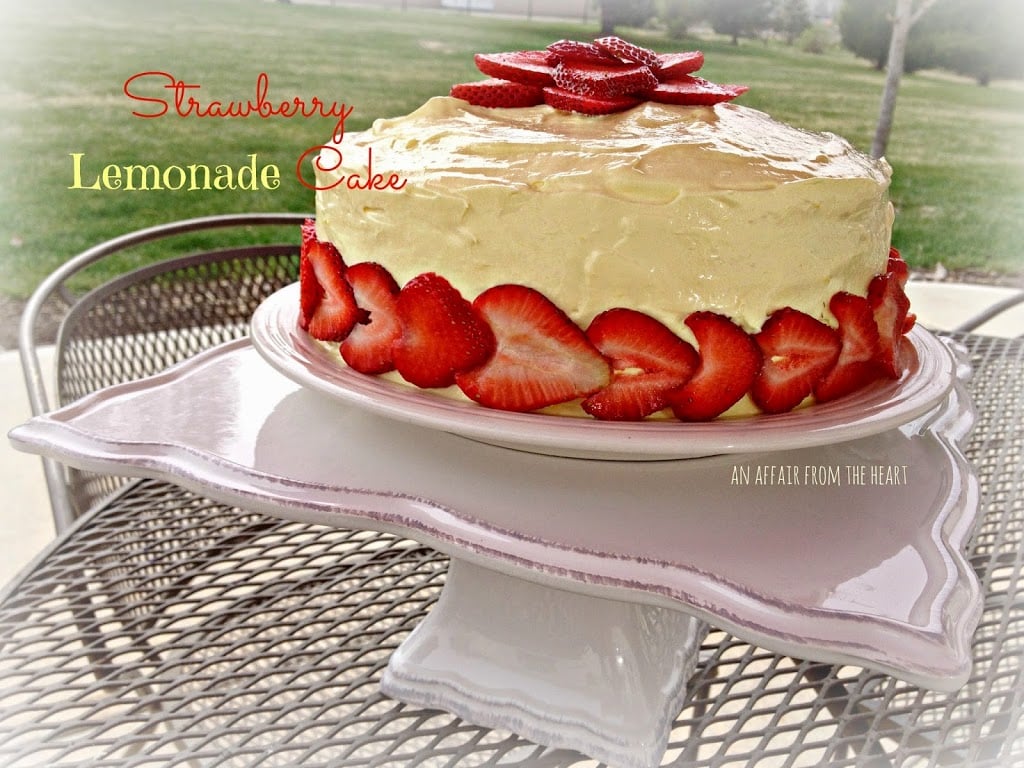
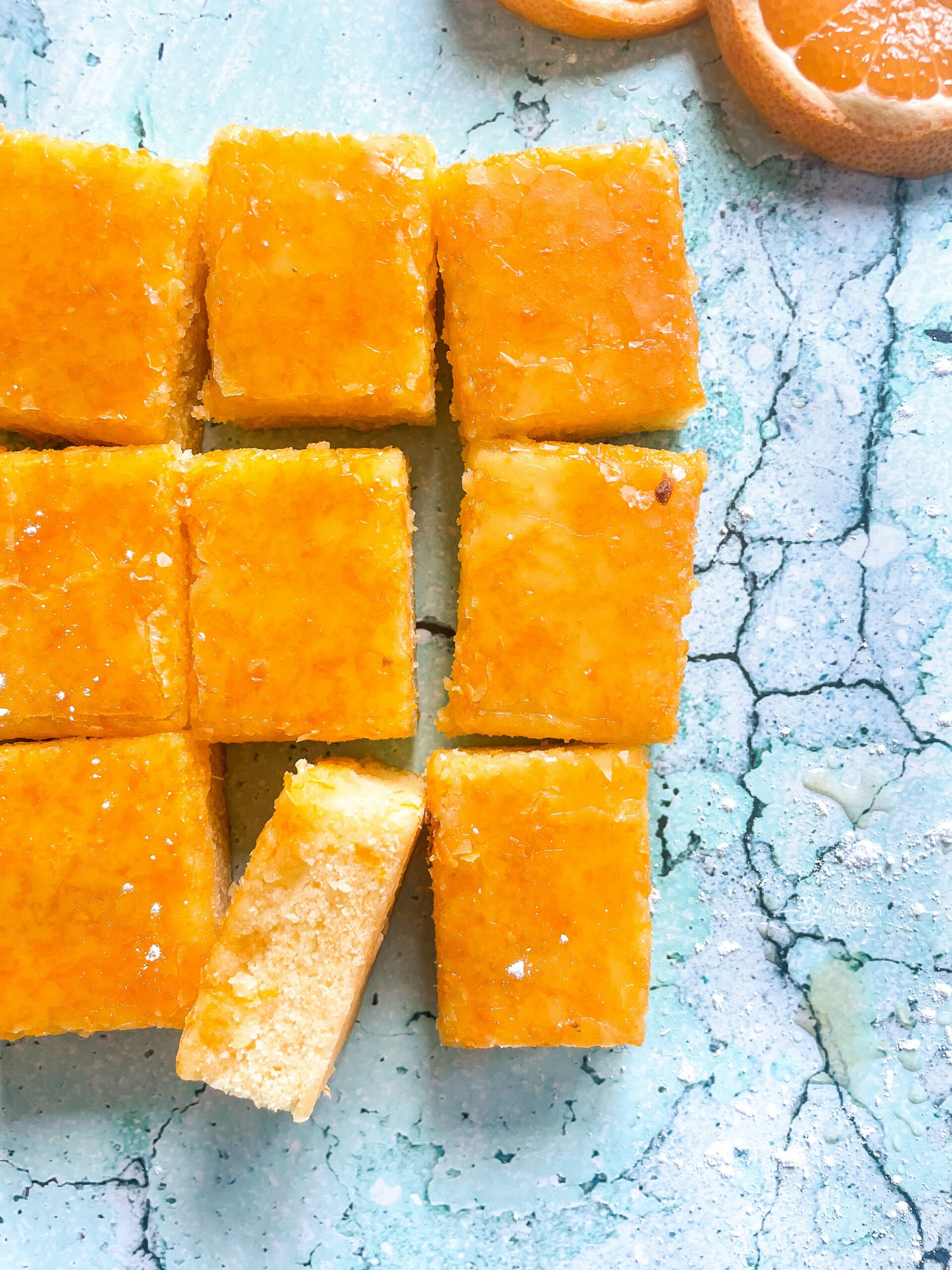

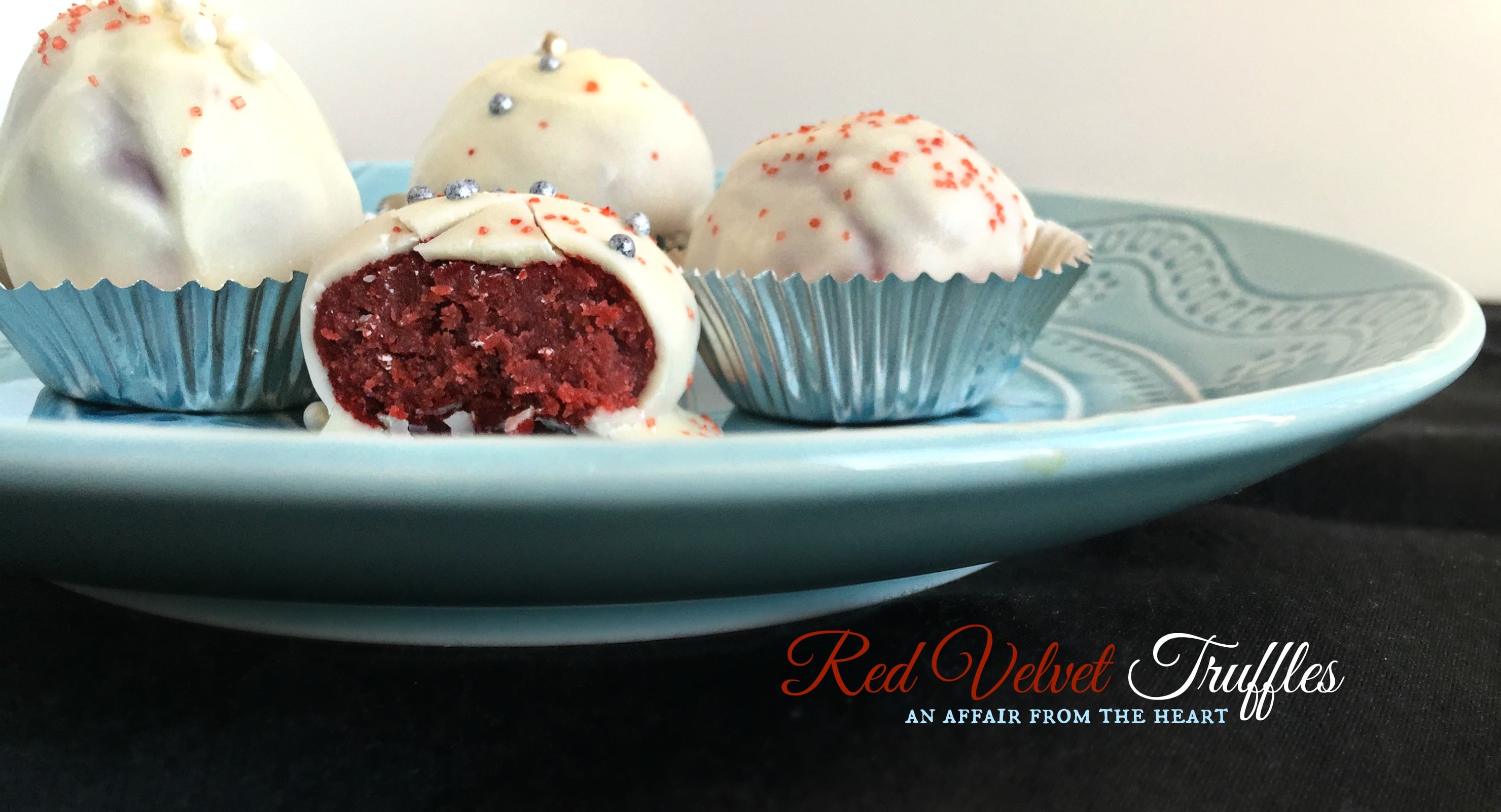
Oh my, when you said it’s like donut but better, I’m totally sold. This will appear regularly from now on. 🙂
I love these! My husband’s grandmother was polish and they make a similar donut for christmas every year. The recipe is top secret but it looks very similar! I may have to make and compare 😉
I love these! My husband’s grandmother was polish and they make a similar donut for christmas every year. The recipe is top secret but it looks very similar! I may have to make and compare 😉
These are HUGE in Michigan where I grew up! Everyone got their fill just before Lent, such a great tradition!
I have only had these once in my life but they are divine. So happy to now have a recipe!
I just learned about these special celebratory treats. I love the idea of different fillings. Will be a fun project to make with kids with your recipe.
These donuts look amazing! And that filling just takes it to another level. Wow. I’ll be making these for the kiddos soon.
Oh my goodness, my grandmother used to make them and I always hated that I never got her recipe!! I am so excited to find this recipe! I love these!
We ate a lot of these in Gdansk – I LOVED them.
Hello,
Can you use almond or coconut flour instead of all purpose? and a sugar substitute like swerve for the sugar?
Carol – I will be completely transparent and tell you that I don’t cook with either of those flours, and I am not sure how they would work with the yeast? Here is an article I found that may help:
https://www.atkins.com/how-it-works/library/articles/low-carb-flour-baking-with-coconut-flour-almond-flour